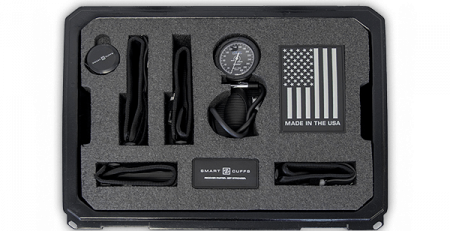Whiplash
Quick treatment is the key
Whiplash is one of the most common injuries dealt with by Chiropractors. It can range from mild to severe, and in some cases can become chronic, causing related psychological issues. In this blog, we will look at what it is and how to treat it.
What is Whiplash?
Whiplash is an injury to the muscles, tendons, soft tissue, bones, discs and nerves of the cervical spine. It is the result of vigorous or violent movement of the head either sideways, or more commonly, front and backwards. Whilst whiplash can be the result of a fall or blow to the head during contact sport, most often it is caused by a rear-end motor vehicle accident.
Recent studies have shown that the sharp forwards/backwards motion causes the lower cervical vertebrae (lower neck) are forced into hyperextension (forwards) while the upper cervical vertebrae are forced into hyperflexion (backwards). This causes an abnormal S shape to form, causing damage to the entire neck area.
Generally, a whiplash injury is acute. However, in around 30% of cases, pain persists and the condition becomes chronic. This is one of the reasons it is imperative to seek treatment for a whiplash injury quickly.
Symptoms
Symptoms of whiplash can range from mild to severe, and may include:
- pain in the neck, shoulders and even arm and upper back
- mild swelling and bruising
- headaches
- dizziness
- weakness
- difficulty concentrating
- hearing and visual disturbances, including tinitus
- difficulty swallowing or speaking
Generally, symptoms will start to develop within 6-12 hours of the accident, and may worsen over the following days. Symptoms can last for days, even up to months, depending on the severity of the injury.
In severe cases, you may start to experience numbness or pins and needles in the face, difficulty with balance or walking, fainting and problems controlling your bowel or bladder. If this is the case, seek medical treatment immediately.
Whiplash Associated Disorder
Whiplash Associated Disorder (WAD) refers to symptoms of psychological distress that can sometimes accompany a more severe case of whiplash. Symptoms include:
- depression
- anxiety
- anger & frustration
- sleep disturbances
- PTSD
WAD is more likely to occur in cases where the original whiplash injury has not fully resolved and pain is still present months after the injury. These cases are considered to have become chronic.
It is important that as well as seeking treatment for the physical symptoms of whiplash, WAD sufferers seek treatment from a psychologist or counsellor trained in pain and injury related conditions.
Diagnosis
Generally, the severity of a Whiplash injury is classified from 0-4 – 0 being no pain, to 4 allowing for potential fracture.
Diagnosis is generally made via examination, and questioning, and then confirmed with either an X-ray or MRI.
Treatment
Years ago, Whiplash injuries were treated by immobilisation. A soft or hard collar was often prescribed. It has now been proven that excessive immobilisation of the neck can actually lead to muscle atrophy (wasting) and decreased blood flow, which slows healing and reduces eventual mobility. That being said, it is important treat the neck carefully, which is why it is best to seek the advice and treatment of a chiropractor to ensure your injury is receiving appropriate care.
These days your Chiropractor will use a range of treatments, depending on the severity of your injury, and your particular physiology and symptoms.
In the acute phase, your Chiropractor will focus on pain and inflammation reduction. Ultrasound, TENS (Transcutaneous Electrical Nerve Stimulation), gentle stretching, ice and anti-inflammatories will be included.
Once the pain and inflammation has begun to subside, your Chiropractor will treat your injury with gentle manual manipulation of the spine including flexion-distraction; soft tissue therapy with SmartTools; joint stretching and resistance; trigger point therapy, including dry needling; and therapeutic massage. The number of treatments you require will be based on the severity of the injury, and the way in which your body responds to treatment.
Your chiropractor will help you with what exercises you can do, whether your pillow is right for your injury, what pain and anti-inflammatory medications you can use and answer any other questions you may have.
Self Care
In addition to seeking the care of a qualified Chiropractor, there are some things you can do yourself that will help in your recovery:
- in the hours immediately after the accident, apply ice to the injury. We talked about ice treatment in our blog Blowing Hot & Cold
- Try not to ‘favour’ your neck, but be gentle in all your head movements
- Over the counter pain killers and anti-inflammatories will help, discuss this with your health care professional
- Watch your posture, try not to slump as this puts pressure on your neck
- Avoid heavy lifting and contact sports until your Chiropractor says it is safe to return to normal activities
- Make sure your pillow offers you the right support for your head and neck, again your Chiropractor can help with this
Prevention
Since Whiplash is generally the result of an accident, it is not possible to entirely eliminate the risk. You can, however, reduce the risk by ensuring the headrests in your car have not been removed, and that they are correctly positioned directly behind your head. If you do not have headrests, it is worth seeing if you can have some fitted to protect your head and neck.
If you are concerned you may have a whiplash injury, contact our Baulkham Hills Clinic on 9639 7337 to make an appointment for diagnosis and treatment with our experienced Chiropractor. If you are suffering from any of the more severe symptoms we mentioned, contact your doctor or local hospital immediately.





